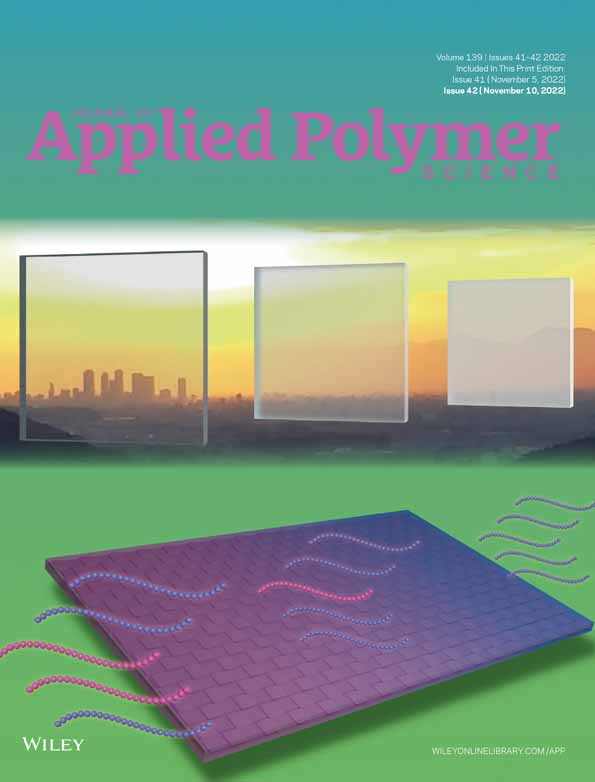Synthesis of novel methacrylate-based nanocomposites containing ZnO via the hydrothermal method and determination of thermal, optical, and biocidal properties
Funding information: Afyon Kocatepe University Scientific Research Projects Coordination Unit, Grant/Award Number: 21-FENED-05
Abstract
In this work, the hydrothermal method was used to prepare nanocomposites of a new methacrylate polymer (PFPAMA) carrying the aryl fluoro group in the side branch and containing different mass ratios (1%, 3%, and 5%) of nano ZnO. Morphological and structural properties of the PFPAMA-ZnO nanocomposites were determined via scanning electron microscope, transmission electron microscopy, Fourier transform infrared, ultraviolet (UV), and X-ray diffraction, whereas the thermal properties of the nanocomposites were determined using thermogravimetric analysis (TGA) and differential scanning calorimetry techniques. The obtained results showed that the thermal stability and glass transition temperature (Tg) of the nanocomposites had increased with the increase in the amount of ZnO. Thermal degradation activation energies (Ea) of the nanocomposites were calculated via non-isothermal TGA experiments using the Flynn–Wall–Ozawa and Kissinger–Akahira–Sunose methods. Both calculated Ea values were compatible with each other and increased in parallel with the ZnO increases. The UV measurements showed that the ZnO nanoparticles added to the PFPAMA played an important role as a UV barrier, and thus expanding the potential applications of the PFPAMA polymer. Finally, the biological activities of the PFPAMA/ZnO nanocomposites against Gram-positive (Staphylococcus aureus) and Gram-negative (Escherichia coli) bacteria were also tested.
CONFLICT OF INTEREST
The authors declare no known conflicting financial interests or personal relationships that could appear to have influenced the work reported in this paper.
Open Research
DATA AVAILABILITY STATEMENT
The raw/processed data required to reproduce these findings are available from the corresponding author on reasonable request.




